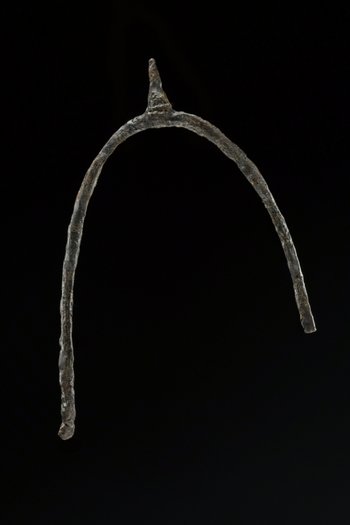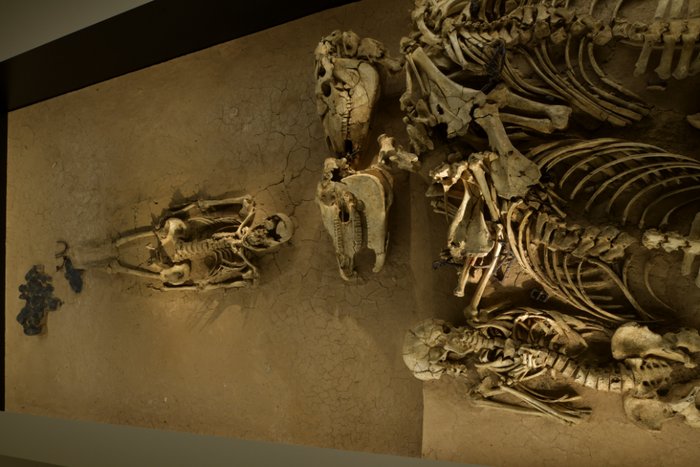Clash of Cultures
Ancient residents – the Thuringian grave of Kleinjena
After their defeat in AD 531, the Thuringian tribes were formally subjects of the Frankish crown. Despite the numerous war dead and forced resettlements into central regions of the Frankish Empire, enough natives remained in the territory of Thuringia up to the Middle Elbe to generate the imposed tributes.
Quite a number of the local people also came to terms with the new rulers, which meant that they kept or were given social rank or offices. The social structure of local communities can still be seen in the grave goods, although the opulence of earlier times is absent.
The religious beliefs of the time are illustrated by an outstanding discovery from Kleinjena, Burgenland district. Two horses and a decapitated man accompanied the lord, who was lying separately in front of them, to the gods and ancestors. The man, aged 50 to 60, wore spurs to indicate his rank. Gifts of weapons, especially the sword expected of a warrior nobleman, were no longer common at that time. The cause of his death is unresolved. The 35 to 45-year-old retainer was beheaded at the time of his lord's burial. In keeping with his status, the lord was also to ride into the afterlife with a mounted servant. This mixed burial corresponds to the traditional beliefs of Germanic tribes. It is evidence that in the 8th century, the Thuringians again alienated themselves from Christian teachings and turned to old religious customs modelled on those of the neighbouring Saxons.

